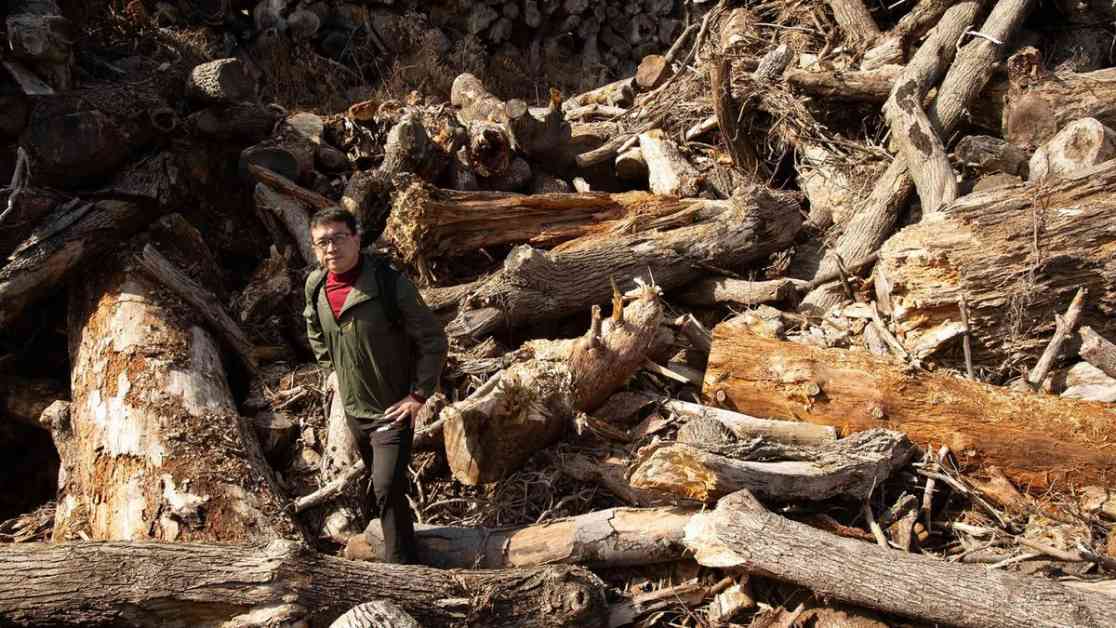An ancient log that was buried almost 4,000 years ago has provided scientists with crucial evidence supporting a simple and effective method for reducing greenhouse gas emissions and combating climate change. The log, discovered in Saint-Pie, Quebec, Canada, was found during a project aimed at identifying sites for wood vaults, which are used to bury dead trees under clay soil to prevent the release of carbon into the atmosphere.
Wood vaulting is a form of biological carbon sequestration that takes advantage of the ability of living organisms to capture carbon. Lead author Ning Zeng, a climate scientist at the University of Maryland, has been researching the concept of burying wood to sequester carbon since 2008. The discovery of the 3,775-year-old log provides concrete evidence that burying wood in specific conditions can effectively lock away carbon.
The log, which belonged to an Eastern red cedar, was preserved under 6.5 feet of blue clay near a creek bed, where it was protected from decay by microorganisms. The dense, water-saturated clay prevented oxygen from reaching the wood, preserving its lignin and holocellulose components. The log had lost very little of its carbon content over the millennia it was buried, demonstrating the effectiveness of wood vaulting in preventing carbon release.
The findings from this discovery serve as proof of concept for wood vaulting as a method of carbon sequestration. By burying waste wood from urban trees and managed forests in wood vaults, it is possible to prevent the rapid return of carbon to the atmosphere when plants decay or are burned. This practice has the potential to offset a significant portion of annual fossil fuel emissions and contribute to combating climate change.
Companies like Carbon Lockdown, founded by Ning Zeng, are already implementing wood vaulting projects, and other companies are following suit. Utilizing clay soils for wood vaults is cost-effective and practical, and these sites can later be repurposed for agriculture or solar farming once the wood is buried. The success of wood vaulting opens up new possibilities for carbon sequestration and offers a promising solution to reducing greenhouse gas emissions.
In addition to burying trees, researchers are exploring the possibility of burying fast-growing plants like grasses to sequester carbon. These innovative solutions are crucial in the fight against climate change and offer hope for a sustainable future. By harnessing the natural ability of living organisms to capture carbon, we can work towards a healthier planet for future generations.










